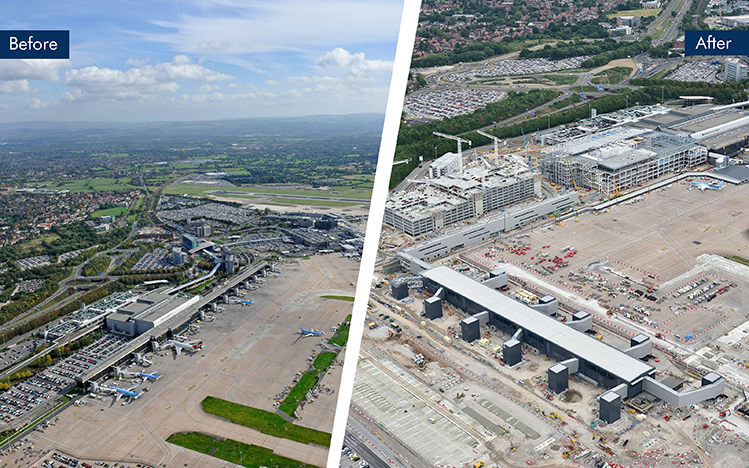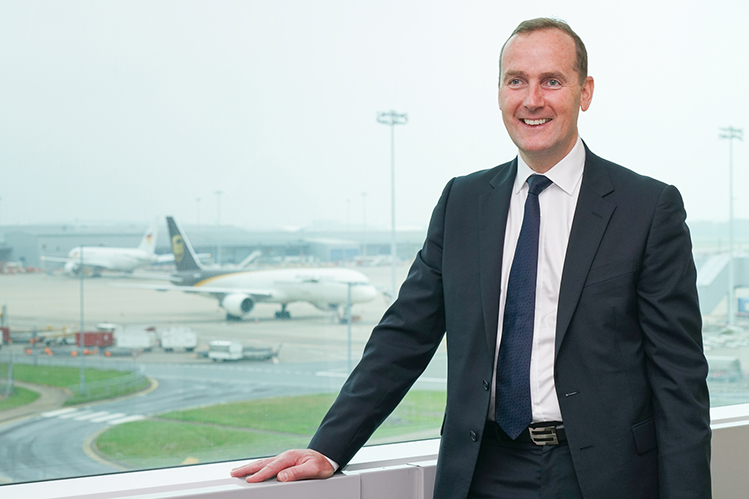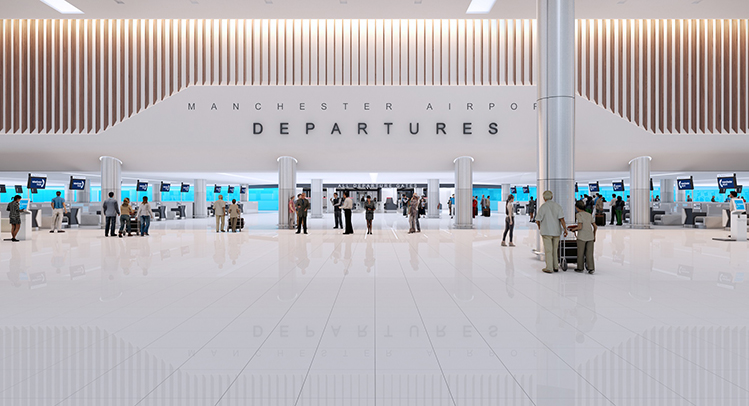Manchester Airport is marking one year of construction on the biggest investment project in its history. The £1 billion (€1.1bn) Manchester Airport Transformation Programme will see Terminal 2 become 150% bigger and the focal point of the airport’s operations.
The airport’s skyline has changed dramatically over the past 12 months, as the first pier has been built and over 70% of the steelwork has been erected on the terminal extension.

Manchester Airport’s skyline has changed dramatically over the past 12 months, as a result of its £1 billion (€1.1bn) Transformation Programme. The first pier has been built and over 70% of the steelwork has been erected on the terminal extension.
At the peak of the project, at the beginning of 2019, it is expected that nearly 1,500 people will be working onsite, with a target of 150 apprentices.
So far on the project, on the terminal extension and pier:
- 14,500 pieces of steel have been installed
- More than 6,700 components, such as precast concrete delta beams, wall panels, and mega-risers, have been manufactured offsite ready for onsite assembly
- More than 41,000m3 of concrete has been placed
- 1,745 miles of cable have been placed
Meanwhile, on the airfield:
- Over 35,000sqm of lean mix and pavement quality concrete (PQC) has been placed, the equivalent of five football pitches
- A further 55sqm of pavement quality concrete will be laid in the first phase
- Around 10,000m of ducts for Aeronautical Ground Lights (AGL) and power have been constructed
- The first airfield stands were handed back in May and June
“This is the largest investment ever made in the airport and will transform the experience for our passengers and airlines alike, as well as creating job and training opportunities for local people and boosting businesses working on the scheme in the process,” says Andrew Cowan, CEO Manchester Airport. “I’m excited to see the first pier open to passengers in just eight months’ time and to press ahead with the rest of the scheme, especially the new terminal building, which is in course to be open to passengers by mid-2020.”
The first pier is set to open to passengers in April 2019. The terminal extension is on course to open in 2020.

Andrew Cowan, CEO Manchester Airport: “I’m excited to see the first pier open to passengers in just eight months’ time and to press ahead with the rest of the scheme, especially the new terminal building, which is in course to be open to passengers by mid-2020.”
To enable the new pier and terminal extension to be constructed, work has also been progressing on the airfield. In the first phase of airfield works, the apron has been extended to the west, including new taxiways and apron reconfiguration to allow the pier and additional aircraft stands to be used.
The second phase, which began in June 2018, involves a new taxiway, increasing the capacity of existing taxiways, new aircraft stands and AGL replacement and installation, and is part of the reconfiguration of the airfield that will help to feed the redeveloped Terminal 2.
These phases will see 148,000sqm of new taxiway and apron, 95,000m3 of concrete poured, and 25 miles of cabling installed with the aim of all excavated material being diverted from landfill throughout. The work is due to be completed by July 2020.
Looking further ahead, after the terminal extension the next pier is scheduled to open in 2022 and the refurbishment of the existing Terminal 2 building will also be completed that year. Terminal 1 is currently scheduled to close by 2023 with the third pier set to open in 2024. Once completed, Terminal 2 will have capacity to handle over 35 million passengers a year.

After the terminal extension, the next pier is scheduled to open in 2022 and refurbishment of the existing Terminal 2 building will also be completed that year. Terminal 1 is currently scheduled to close by 2023 with the third pier set to open in 2024. Once completed, Terminal 2 will have capacity to handle over 35 million passengers a year.







